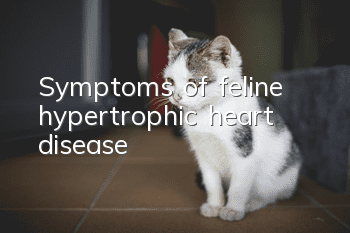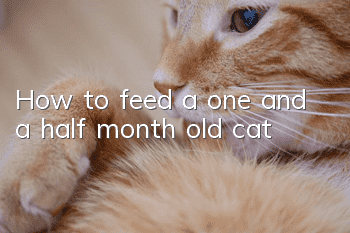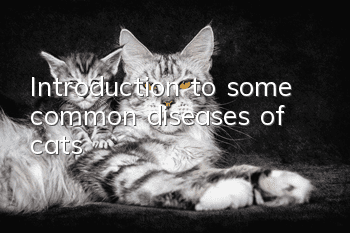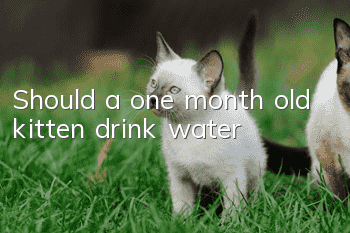Symptoms of feline hypertrophic heart disease

This disease is not detectable at birth and is a disease that gradually evolves. Some cats become sick and die as kittens, but most commonly cats live for many years without any symptoms. The main lesions are myocardial hypertrophy, the left ventricular chamber becomes smaller, the ventricular wall becomes harder, and the myocardial stretchability is reduced. Therefore, myocardial hypertrophy is more common in cats clinically.
Introduction to hypertrophic heart disease
Myocardiac hypertrophy (HCM) is the heart’s adaptive response to hemodynamic overload. It includes an increase in cardiomyocyte protein synthesis, an increase in volume, and a proliferation of cardiac fibroblasts. In 1979, the name was unified as hypertrophic cardiomyopathy. Regarding hypertrophic heart disease in animals, there have been reports for a long time about posterior aortic embolism, one of the main symptoms of cardiomyopathy in cats. Detailed reports have been made as early as 1930 to 1966. The main lesions are myocardial hypertrophy, the left ventricular chamber becomes smaller, the ventricular wall becomes harder, and the myocardial stretchability is reduced. Therefore, myocardial hypertrophy is more common in cats clinically.
This disease is not detectable at birth and is a disease that gradually evolves. Some cats become sick and die as kittens, but most commonly cats live for many years without any symptoms. If a veterinarian with experience and knowledge in this field, coupled with good equipment, uses ultrasound examination, in most cases, although not necessarily, the disease can be diagnosed when the cat is three years old. , but some sick cats can survive for a long time. Cats that are asymptomatic often die suddenly from a severe cardiac arrhythmia, or are diagnosed with the disease only because of blood clots in their hind legs. Cats may also develop cardiac insufficiency. Although medications can relieve symptoms, they cannot cure it.
Myocardial hypertrophy is a basic adaptive response of the heart to acute and chronic hemodynamic overload. Phenotypic characteristics of cardiac hypertrophy are determined by intranuclear gene expression patterns. The gene expression patterns induced by different stimuli mainly depend on the signal transduction pathways they initiate. Breeds prone to the disease are cats and small dogs such as Pekingese and Pomeranians.
Myocardial hypertrophy is not a physiological, benign, adaptive compensatory process, but a pathological process that can cause severe damage to cardiac function. The pathogenesis of cardiac remodeling and ventricular hypertrophy is multifaceted, among which local and circulating neuroendocrine factors may play a greater role. Hypertrophic cardiomyopathy is characterized by asymmetric hypertrophy of the ventricular septum, abnormal hypertrophy of myocardial cells, disordered arrangement, and forward movement of the mitral valve during systole. Hypertrophic heart wall compliance decreases, resulting in increased ventricular filling resistance.
Symptoms of hypertrophic heart disease
Affected cats may not have any symptoms in the early stages. As the disease progresses, symptoms of heart failure, and/or thromboembolism, or sudden illness may develop.Sudden death, acute onset of dyspnea and lethargy, anorexia, depression, inactivity, and reluctance to move. Clinical signs may include any of the following: decreased activity (drowsiness), difficulty breathing (dyspnea), tachypnea (tachypnea), reduced or no appetite (anorexia), vomiting, posture (reluctance to lie down, wide front legs) posture), syncope (fainting) and sudden death. Thromboembolism may cause sudden paralysis of the hind limbs and a constant cry of pain. Typical 5P symptoms: pain or even howling (Pain), paresis (Paresis), pale mucous membranes (Pallor), paralysis of hind limbs without pulse (Pulselessness), floating body temperature (Poikilothermy), and even sudden death due to cardiac rhythm disorder. We don’t want our cat to suddenly become paralyzed or die before we learn about cardiomyopathy.
- How to train a cat to understand the "come here" command? Cat training!
- First aid method for cat shock, a must-have for families!
- What do I need to transport a cat on a plane?
- Male cats sometimes meow at night
- Why does a Siamese cat’s coat color change?
- How to train a cat to be obedient and well-behaved, the secret to making a cat obedient!
- What is the personality of the Russian Blue cat?
- What foods do cats like to eat?
- Is it necessary for cats to eat hair removal cream? These natural hair removal methods are healthy and effective!
- What causes cats to be picky and anorexic?



